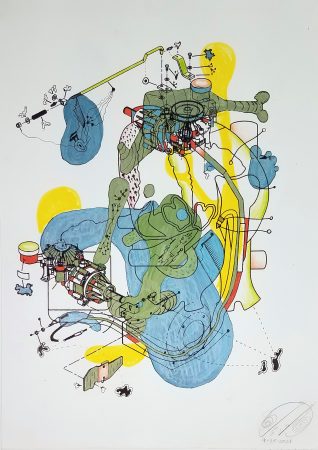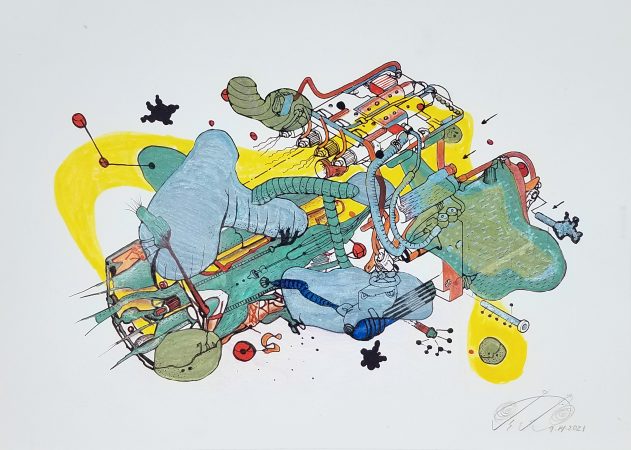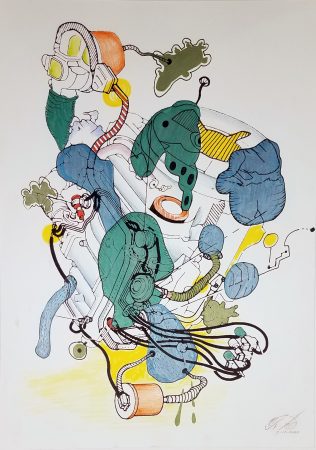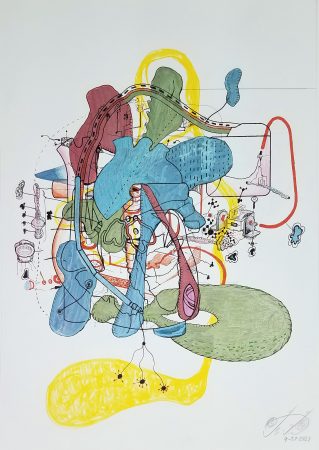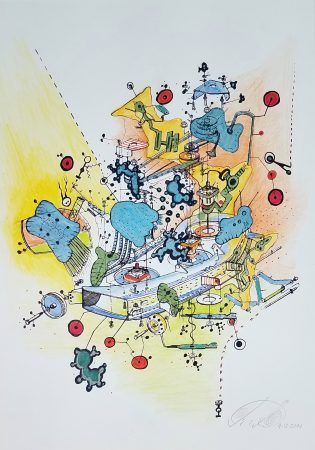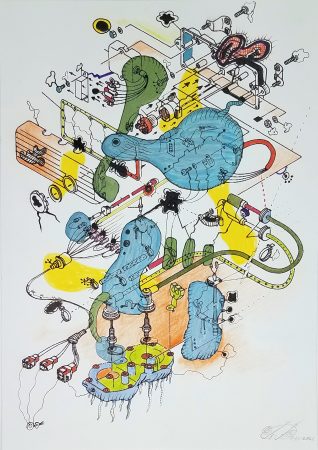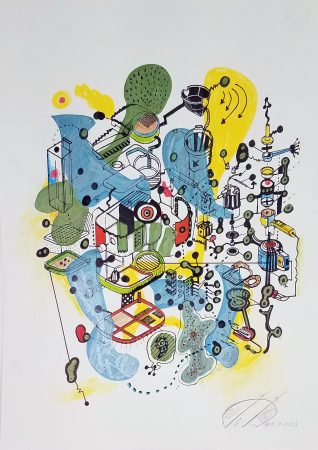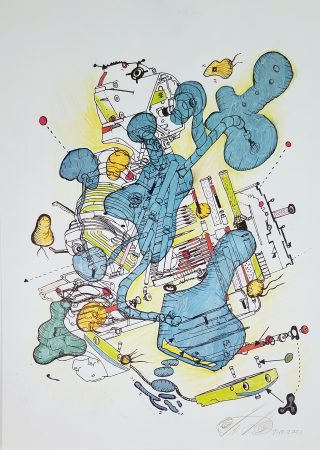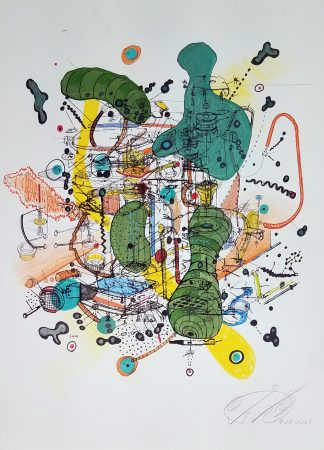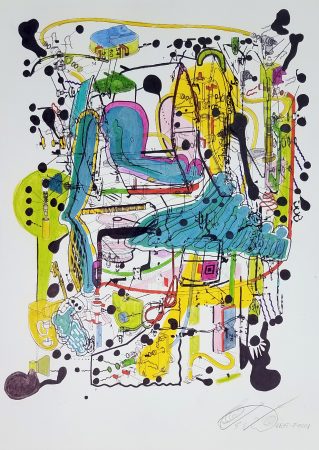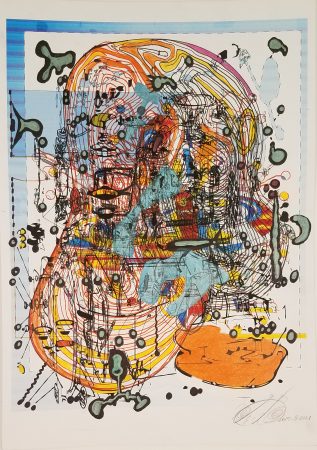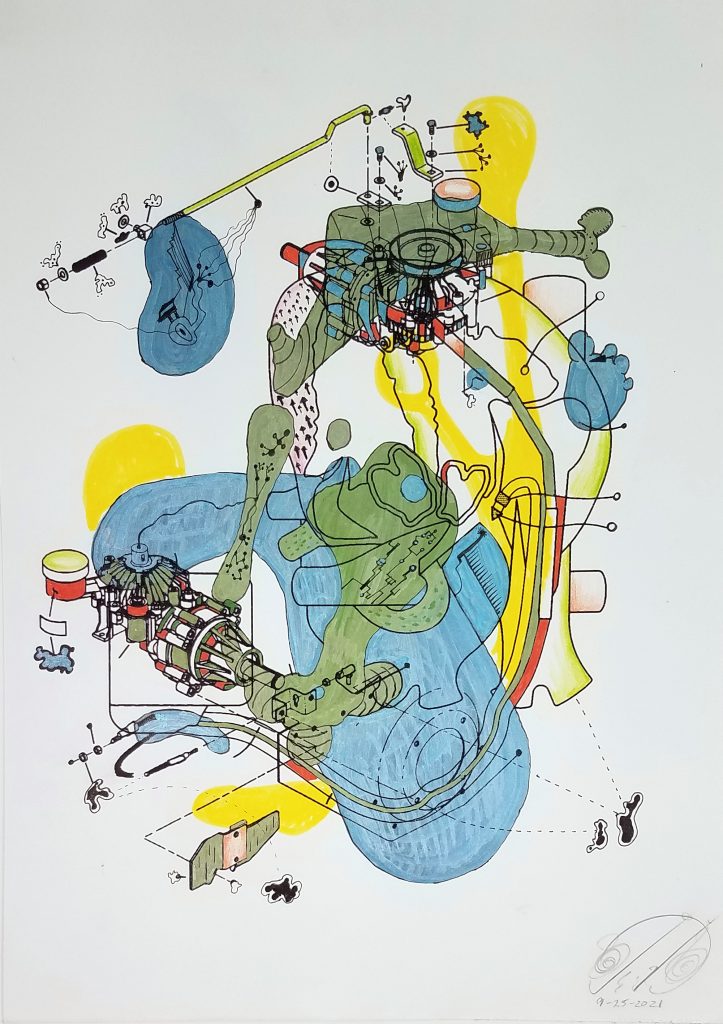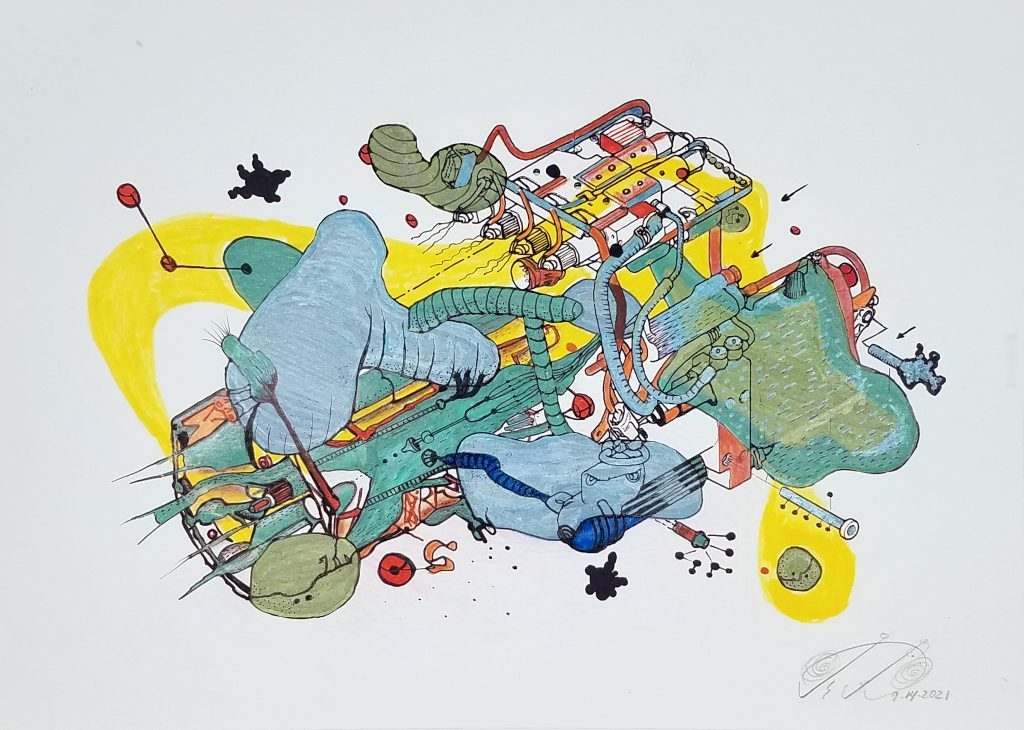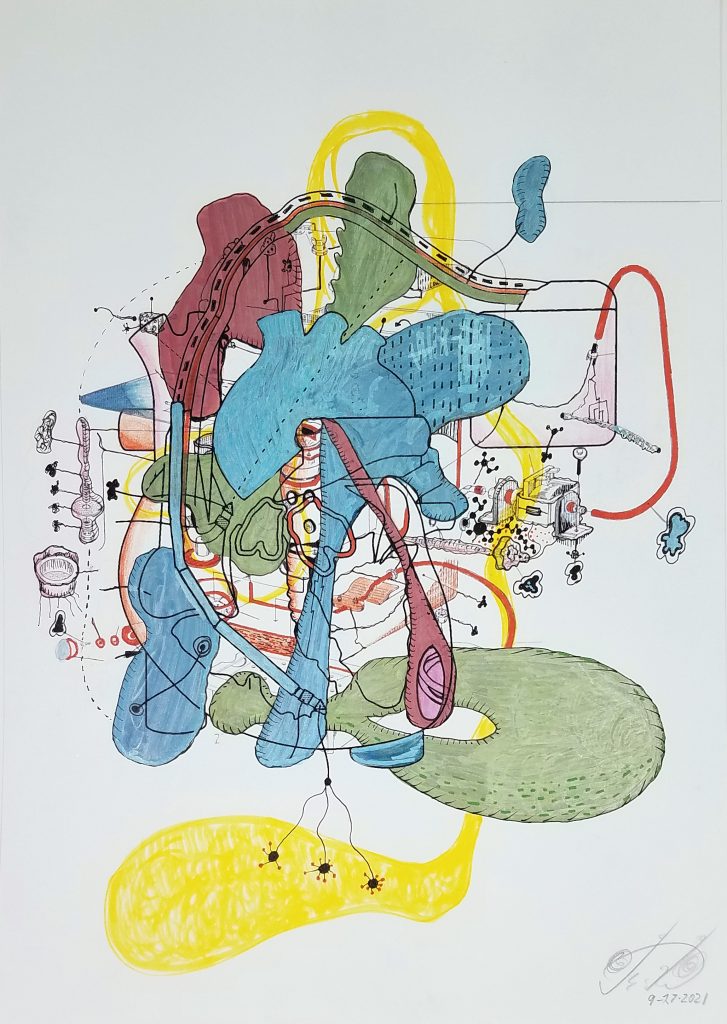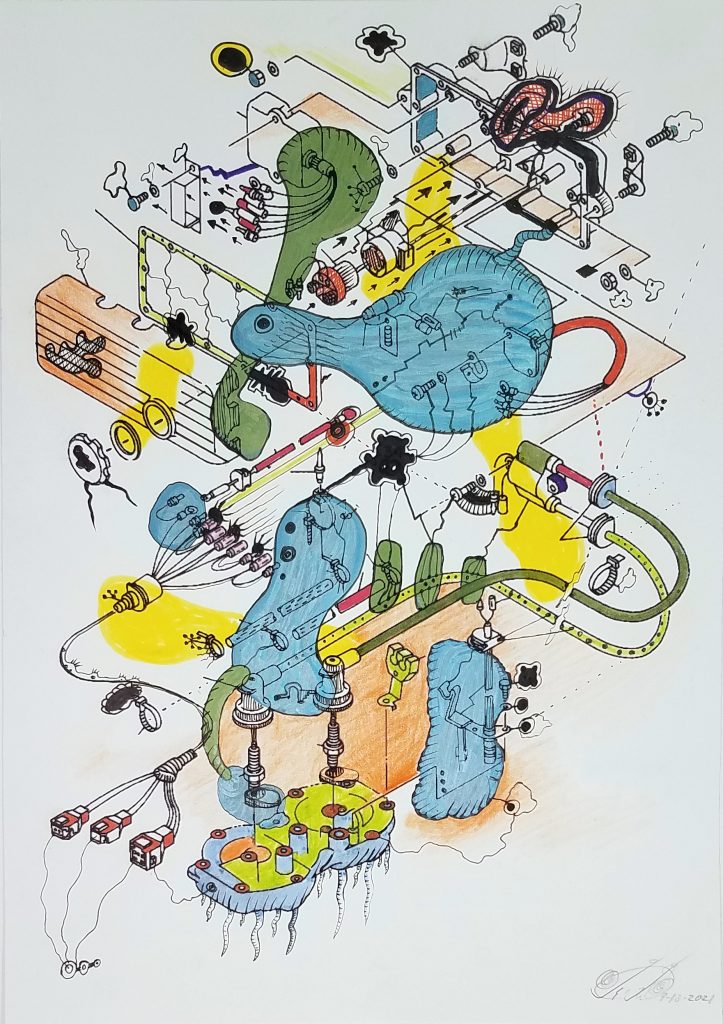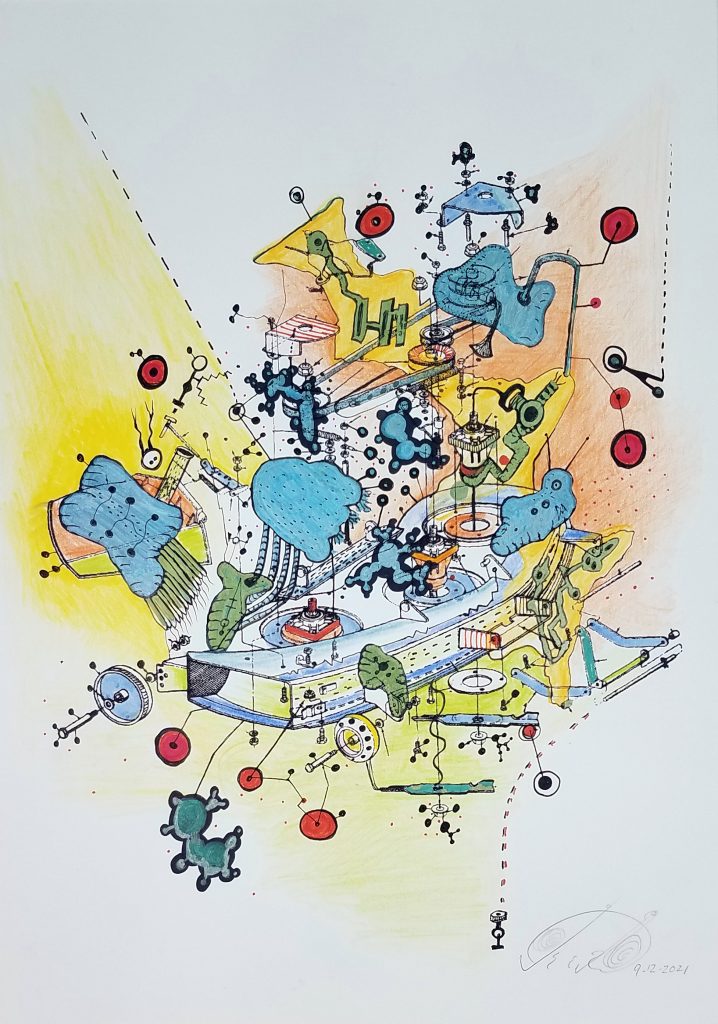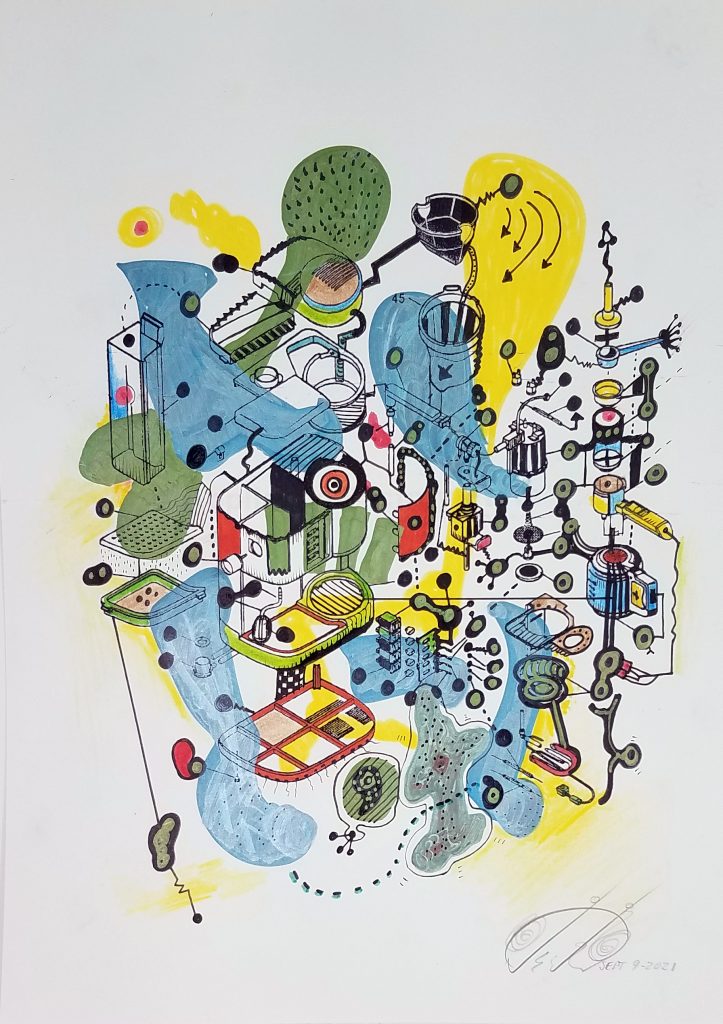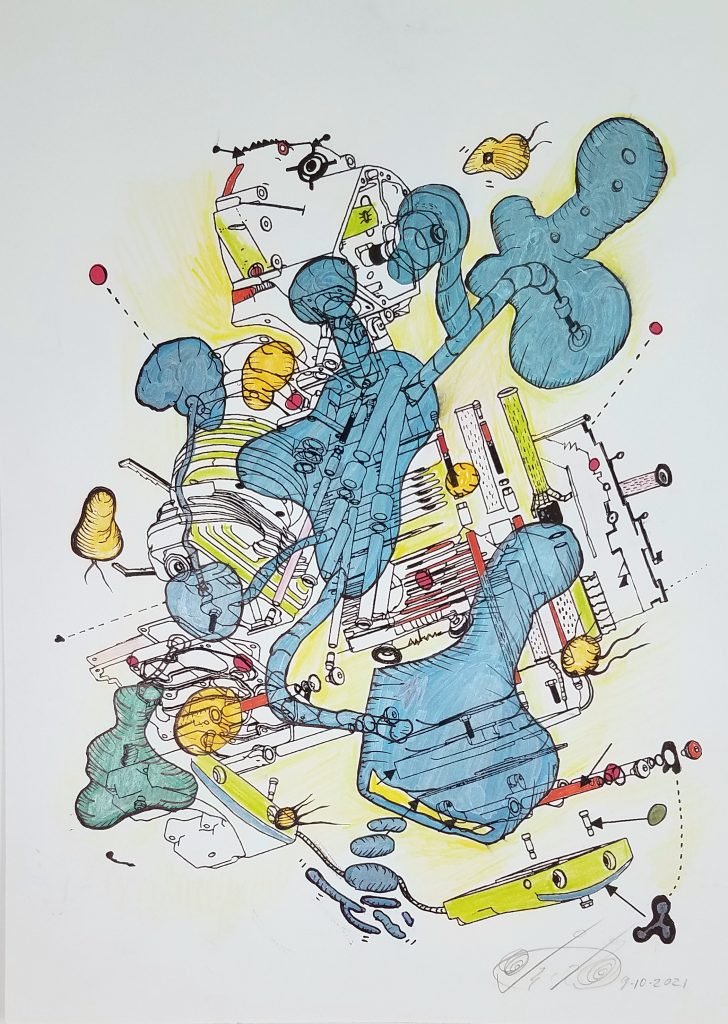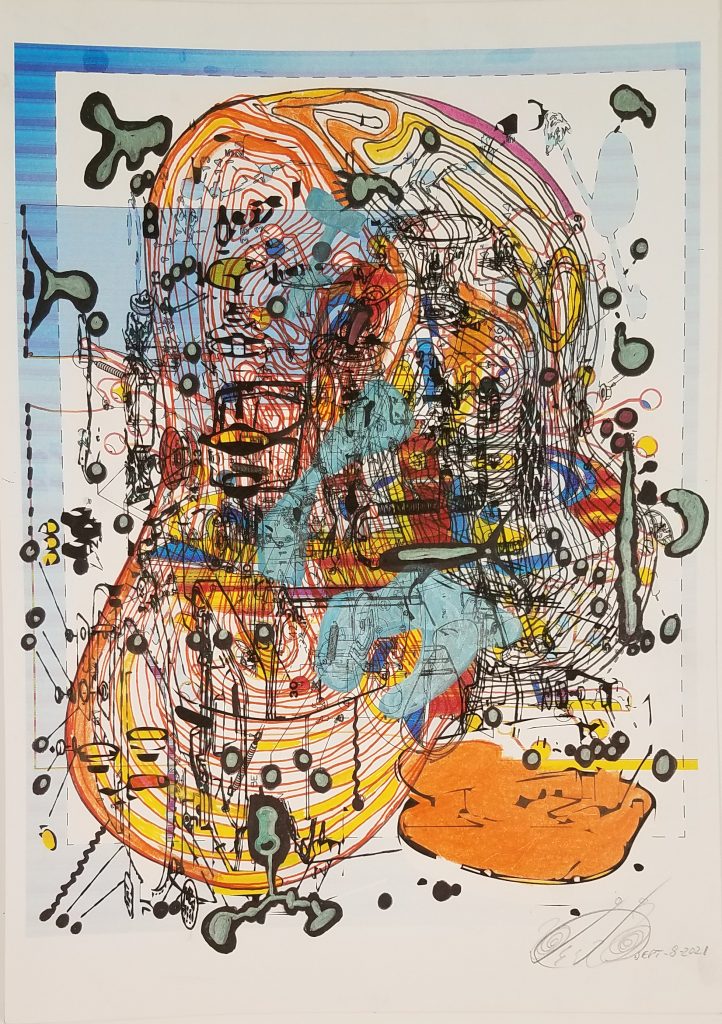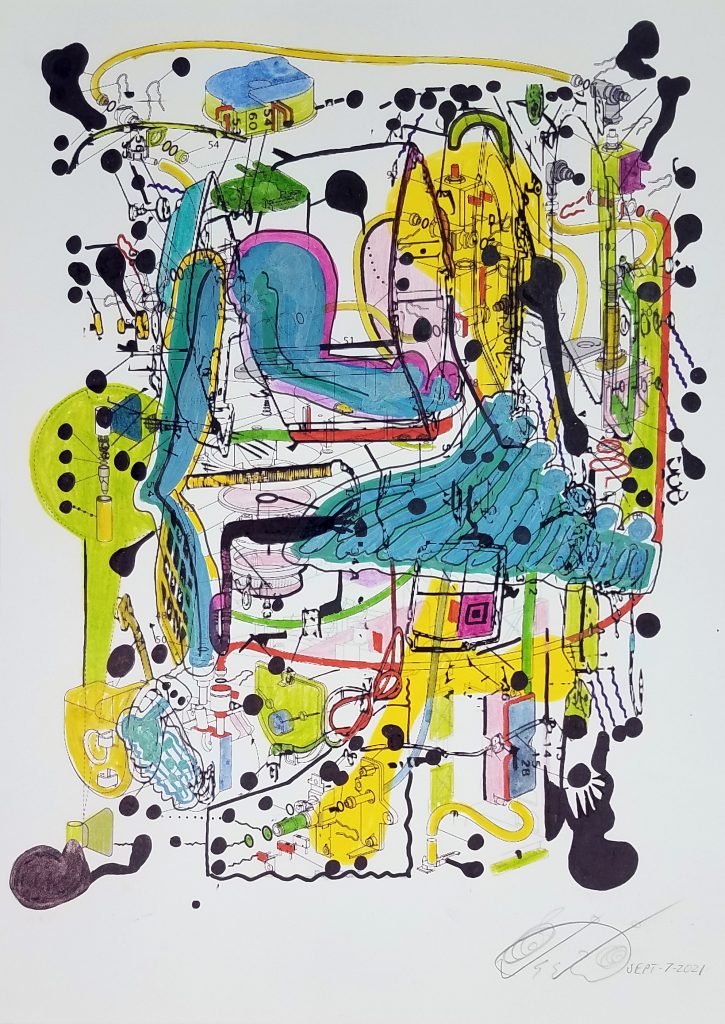Sacs, Membranes, Motors, and Vesicles are where the established biological networks come together with powerful information and machine networks.
In these works, exploded diagrams illustrate the functional organs of biological and machine systems coming together.
These works are diagrams of an emergent systems evolution, created when the microbes and vesicles of cells enter the technology, absorb it, and get enveloped by it. Intertwining elements enter each other and become part of the flow and process of consumer consumption and waste cycles.
Sacs refer to small, sac-like structures within cells or within larger cellular structures. These can include lysosomes, which contain digestive enzymes, or peroxisomes, involved in metabolic processes. Membranes are thin layers of lipid and protein that surround cells and cell organelles, serving as barriers to separate the cell’s interior from its environment. They play an important role in cellular communication and transport of substances across the membrane. Motors are proteins that convert chemical energy into mechanical work, allowing cells to carry out processes such as transport of vesicles and organelles within the cell. They are also machine entities that convert chemical energy for transport of humans and goods. Vesicles are small, membrane-bound structures that serve as a means of transport within; such as proteins and lipids, and can show processes such as exocytosis, where they release their contents to the outside of the cell.
These works endeavor to create a dynamic visual equilibrium to suggest symbiosis between machine and natural elements while fleeting, painful, and transformative will occur.
Parasitism of our machine entities by microbes and other species is one process we have observed. Microbes riding on industrially produced currencies with air flight as their distribution method, finding their way to human hosts, is another. Cockroaches nest inside warm electronics, eating and finding the ideal friendly homes to rear their young, all with easy access via electronic cooling vents. Indeed as cockroaches feast on human scraps, their microbiomes mirror our own. Our industrially produced foods are also suitable for immature cockroaches and reproduce quickly in these ideal environments.
Researchers have discovered that microbes are evolving enzymes of plastic-degrading proteins, enzyme “homologs.” They may behave like an enzyme but may not technically be an enzyme. Scientists have found over 30,000 enzyme homologs capable of degrading ten different types of plastic.
Let’s hope the oil industry does not get a hold of this news to further distract us from removing oil drilling and plastic production while continuing to spew carbon pollution into our atmosphere.
Parasitism and exploitation of our natural living world by industrial-strength machines and their chemical and gaseous outputs are the most explicit extinction pressures for all species, including ours.
Plastic waste infuses itself into every corner of our natural environment. Pharmaceuticals are flushed and enter our aquatic spaces mutating fish to be more feminine. Human damming of rivers wonderfully creates power for human civilization though sadly, it stops salmon runs. This results in the starvation of the forests of fish and insect proteins. Who would know the connection between our electricity use, overfishing of salmon, and the starving forests for nutrients?
Our engineering has advanced too quickly, and machines for felling trees for wood harvest kill other species while unraveling the webs of life.
Another web is emerging in the Sacs, Membranes, Motors, and Vesicles series.
Life is adaptable and will always find a niche somewhere in the machine. The places where dust collects on fans and wires promote particular kinds of crystallized growth. Electronics invite insects and spiders to create new selective pressures and forced symbiosis as machines and life painfully intertwine. Bacteria and molds find perfect refuge in the moist spots in our machines.
Given these selective pressures, accidental symbiotic interdependencies between living beings and machines may arise over time. They may become parasites at first to things like heat, though eventually, they may find a mutualistic relationship.
In a strange twist of fate, the cockroach babies find the perfect nesting spot, warm electronic nurseries, where the cooling vents are ideal doors. I discovered this in my old wall telephone in NY. When the phone rang, the young cockroaches would go running.
While living beings are occupying the machines, for the most part, they are overwhelmed and dominated by machine aftereffects.
However, living things find refuge in the machine, especially bacteria, and microorganisms seem to have complete comfort. They can quickly mutate and adapt, making them perfect inhabitants in machine worlds. It has been discovered that microbes with lateral gene transfer have been able to “breathe” rocks with extracellular electron transfer (EET) and other materials outside their cells.
The ideas of Lynn Margulis, where one thing invades another in her now well-accepted theory of endosymbiosis, seem almost violent. However, it tells us how things will move with life invading our machine worlds. The optimal, genetically mutated being will be conceived and born in a future garbage dump. Gases spewing from rotting vegetables will fuel new forms of plastic-eating fungi, viruses, bacteria, and living systems. Yet that is happening here, as the machines insert themselves into our living systems. EET-capable microbes are already being looked at in aiding in toxic waste cleanup as an alternative energy source.
Endosymbiotic processes have already created a successful consortium of bacteria and human cells. The machine cells mixing with the bacterial cells produce a new network. We have two pounds of bacteria in our stomachs that help digest our food, yet I have at least a few thousand pounds of machine cells that are also my extended memory, remote sight, and ears, intertwining and connecting around the world.
There are many examples where living systems are forced into the organized systems of the human world. Agriculture is perhaps the most significant example where we machine control, form and genetically engineer, and create animals and plants of our desire. If the machine becomes the parasite and overwhelms life, our own lives will seem seriously curtailed. The ultimate question in the parasite-host and subject relationship is who the dominant being is.
Our new emerging species and our algorithmic intelligence give us a transcendent way of knowing and understanding.
There is little doubt that this form of consciousness is emergent. It is not consciousness as we imagine it.
Still, if our matter, energy, and information spaces push our minds and conceptual frameworks in particular directions, we need to fear this artificial intelligence.
What are the mutualistic relationships between the machines and existing living systems? Zoos, meat slaughtering, and agricultural systems are all a kind of mutualism, yet they exert selective pressures on all species.
The selection of certain monocultural crops, like corn or wheat, that can be easily harvested impacts the death of our soils and, in the end, the health of our microbiomes and microbial diversity in our guts.
So it will tend to favor animals and insects entering machines and cities. Bacteria and viruses that can laterally transfer their genes will find favor in this new world.
It will also promote the most adaptive urban species, such as rats, mice, cockroaches, cats, and flies, that can comfortably inhabit these machine spaces.
To find a more gentle symbiosis between machine, human, animal, insect, and microbial species, we need to study better the complex intertwining our techno-driven cultures promote.
I would rather be a symbiont with technological systems than feel I am their prey and host.
Exhibitions
FORT HAYES GALLERY Columbus, Ohio, US – March 13-April 22 2023
Flow: visual interpretations on the theme of water invites Synthetic Evolution AI prints + one from the Machines, Motors and Vessicles Series and video of AI works morphing hand made drawings curated by Teresa Weidenbusch
ANTONIO PRATES GALLERY Lisbon Portugal, June 23-Sept 15, 2022
The Worldwide Premiere of collages and drawings inspired by the intertwining of human and machine interactions. Invited by Antonio Prates in collaboration with Centro Portuguese de Serigraphia and Joao Prates.
